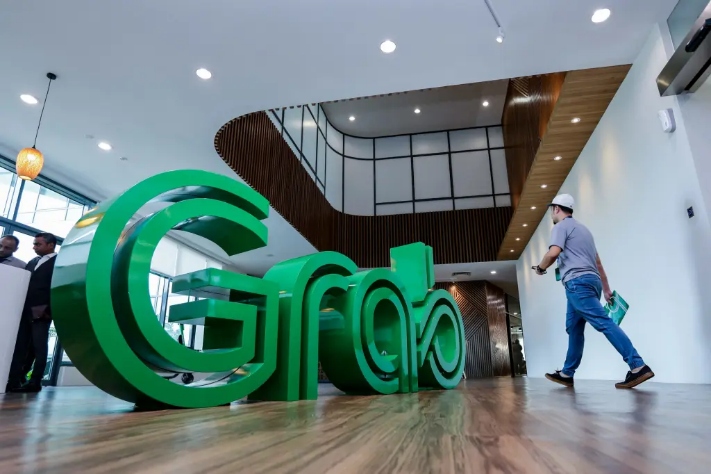Grab Holdings Ltd, Southeast Asia’s leading super app, is taking a bold step to strengthen its position in the regional market by issuing convertible bonds worth IDR 20.35 trillion (approximately USD 1.25 billion). This strategic financial move underscores Grab’s aggressive expansion efforts through acquisitions, signaling a renewed growth phase for the Singapore-based tech giant. The issuance of Grab convertible bonds is part of a broader effort to consolidate services, deepen market share, and capitalize on post-pandemic digital transformation trends.
This development not only reflects Grab’s capital market agility but also highlights the evolving nature of funding in Southeast Asia’s tech sector. As Grab continues to evolve from a ride-hailing pioneer into a full-fledged tech ecosystem — encompassing fintech, food delivery, logistics, and mobility — the firm’s decision to issue convertible bonds could be a harbinger of broader M&A activity in the region.
What Are Convertible Bonds and Why Is Grab Using Them?
Convertible bonds are a type of debt instrument that can be converted into company equity at a later date. For high-growth companies like Grab, they offer a flexible financing tool: they provide immediate capital without diluting ownership unless converted later. Investors often view convertible bonds as relatively low-risk compared to equity since they offer fixed income while retaining the upside of stock conversion.
The issuance of Grab convertible bonds allows the company to raise significant funds with manageable immediate costs. In this case, the proceeds will be directed toward financing potential acquisitions, particularly in the mobility and delivery sectors across Southeast Asia. Grab’s move suggests that it sees ripe opportunities to consolidate or acquire tech-enabled services that complement its ecosystem.
Moreover, the structure of Grab convertible bonds gives the company the ability to tap institutional investors who may be more comfortable with debt than direct equity exposure, especially in a volatile tech market environment. This approach gives Grab time to deploy capital wisely without rushing into capital markets or further diluting its shareholder base.
Acquisition Strategy: Grab’s Push for Regional Tech Dominance
Grab has long held ambitions of being the dominant super app in Southeast Asia, competing closely with rivals like GoTo, Sea Group, and increasingly, ShopeePay. While the company went public via SPAC in 2021, its share price has been under pressure since the listing. Nonetheless, Grab has continued to focus on long-term strategic growth, and M&A remains a key tool in that journey.
The newly announced Grab convertible bonds issuance will provide the firepower to explore acquisitions across the region. Though Grab has not publicly disclosed specific targets, analysts believe the company may be eyeing smaller mobility platforms in emerging markets, food delivery rivals in second-tier cities, or fintech startups that can enhance its payment ecosystem.
Such acquisitions could help Grab reduce competition, unlock operational efficiencies, and further integrate its services across verticals. The strategy also aligns with the current Southeast Asian trend of consolidation, especially among tech players seeking profitability over growth-at-all-costs.
Additionally, Grab’s interest in growing its fintech capabilities — particularly through GrabPay and digital lending services — may lead it to acquire companies in Indonesia, Vietnam, and the Philippines. With digital financial services increasingly seen as a core part of super app models, the Grab convertible bonds offer an opportunity to accelerate the build-out of this ecosystem.
Investor Sentiment and Market Implications
The issuance of Grab convertible bonds comes at a critical moment for Southeast Asia’s tech market. After a wave of investor caution in 2022–2023, the region is seeing renewed interest in companies with sustainable business models and clear paths to profitability. Grab’s move suggests that it is positioning itself as a consolidator — a company that is not only surviving market correction but also actively shaping the next phase of growth.
Convertible bonds are often well received by investors seeking lower-risk exposure to high-growth firms. In Grab’s case, the bond structure includes terms that provide predictable yield while offering upside should the company’s stock price recover in the coming years.
This could attract institutional investors, sovereign wealth funds, and private equity players looking to participate in Southeast Asia’s tech resurgence. The bonds are also seen as a sign of confidence in Grab’s long-term strategy — that it can successfully integrate acquisitions and turn them into profitable segments within its ecosystem.
While concerns remain about the challenges of integration and rising competition, the Grab convertible bonds offer a financial buffer to pursue opportunities aggressively without relying solely on equity fundraising.
The Road Ahead for Grab
Looking ahead, the funds from the Grab convertible bonds will likely be deployed strategically over the next 12 to 24 months. Analysts expect that Grab will prioritize acquisitions that strengthen its core business verticals and improve unit economics.
In markets like Indonesia and Vietnam, where competition remains intense, Grab may look to scale its delivery and payments operations. The company could also seek partnerships or acquisitions in the EV (electric vehicle) and mobility tech sectors, aligning with regional goals for sustainable transport.
Importantly, Grab's financial maneuver may inspire other tech firms in the region to consider similar instruments. Convertible bonds provide a useful model for raising funds in a risk-managed way — offering immediate capital while postponing dilution.
In conclusion, the Grab convertible bonds are not just a financial tool but a strategic signal. They reflect the company’s readiness to lead the next wave of tech consolidation in Southeast Asia and a calculated bet on its ability to extract long-term value from acquisitions.
Read More






 Friday, 19-12-25
Friday, 19-12-25







